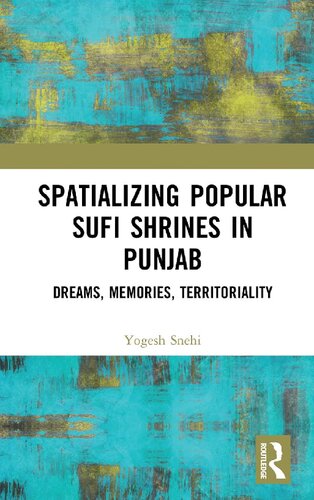

Most ebook files are in PDF format, so you can easily read them using various software such as Foxit Reader or directly on the Google Chrome browser.
Some ebook files are released by publishers in other formats such as .awz, .mobi, .epub, .fb2, etc. You may need to install specific software to read these formats on mobile/PC, such as Calibre.
Please read the tutorial at this link: https://ebookbell.com/faq
We offer FREE conversion to the popular formats you request; however, this may take some time. Therefore, right after payment, please email us, and we will try to provide the service as quickly as possible.
For some exceptional file formats or broken links (if any), please refrain from opening any disputes. Instead, email us first, and we will try to assist within a maximum of 6 hours.
EbookBell Team

5.0
50 reviewsThis book explores the organic lives of popular Sufi shrines in contemporary Northwest India. It traverses the worldview of shrine spaces, rituals and their complex narratives, and provides an insight into their urban and rural landscapes in the post-Partition (Indian) Punjab.
What happened to these shrines when attempts were made to dissuade Sikhs, Muslims and Hindus from their veneration of popular saints in the early twentieth century? What was the fate of popular shrines that persisted even when the Muslim population was virtually wiped off as a result of migration during Partition? How did these shrines manifest in the context of the threat posed by militants in the 1980s? How did such popular practices reconfigure themselves when some important centres of Sufism were left behind in the West Punjab (now Pakistan)? This book examines several of these questions and utilizes a combination of analytical tools, new theoretical tropes and an ethnographic approach to understand and situate popular Sufi shrines so that they are both historicized and spatialized. As such, it lays out some crucial contours of the method and practice of understanding popular sacred spaces (within India and elsewhere), bridging the everyday and the metanarratives of power structures and state formation.
This book will be useful to scholars, researchers and those engaged in interdisciplinary work in history, social anthropology, historical sociology, cultural studies, historical geography, religion and art history, as well as those interested in Sufism and its shrines in South Asia.